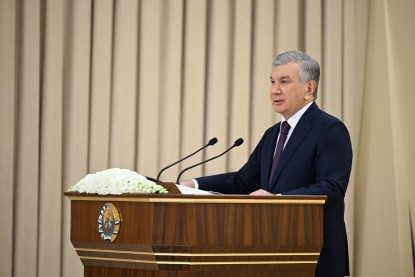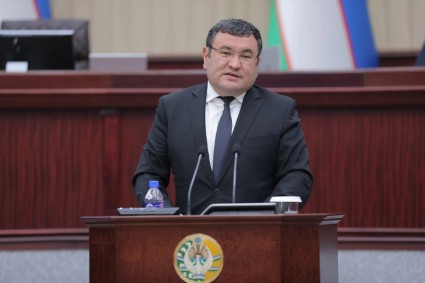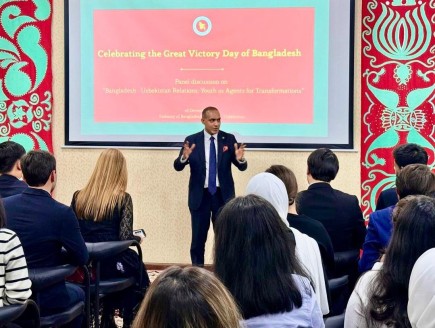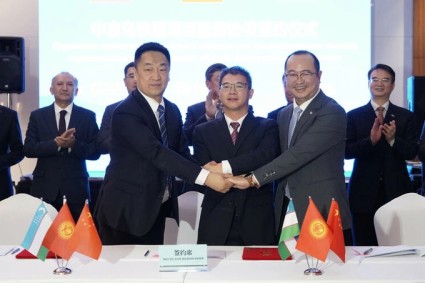Momina Aijazuddin is the IFC Regional Industry Head, Financial Institutions Group for the Middle East, Central Asia, Türkiye, Afghanistan, and Pakistan region.
Good afternoon Mrs. Aijazuddin. Thank you for having us!
Tells us why should Micro, Small, and Medium Enterprises (MSMEs) receive special attention as clients of financial institutions?
At IFC, we pay special attention to small businesses because they are the engines of job creation and economic growth. Nine out of ten new jobs worldwide are created by small businesses, and we need nearly 3.3 million new jobs every month in emerging markets by 2030 to absorb the growing workforce.
Smaller enterprises are the backbone of the world economy, consistently contributing to the GDP of many countries and regions. They also represent the largest group of potential business clients for banks and multilateral financial institutions, as they account for 80 percent to 90 percent of businesses in many countries. To grow and thrive, they need access to financial and non-financial services.
Though some progress has been made, lack of access to finance – globally as well as in Central Asia specifically – is one of the biggest hurdles preventing smaller businesses from growing and creating jobs. A structured approach is needed to achieve optimal results, and therefore, we need to first understand how big the financing gap is and determine if there is a business case.
For IFC and the World Bank Group as a whole, increasing access to finance for MSMEs is part of a strategic objective of promoting private sector development. The World Bank Group, including IFC, wants to take this even further and advocates Universal Financial Inclusion by 2030. This means not only pushing the access to credit, payments, accounts and other services, but the effective use by underserved customers of a range of financial services that have been designed to fit the needs of this customer.
To assess the financing gap for MSMEs, the World Bank Group developed its own methodology (SME Finance Gap Report, 2017) The results were staggering: 65 million enterprises, or 40 percent of formal MSMEs in developing countries, have a combined unmet financing need of $5.2 trillion annually. It is not yet possible to estimate the financing gap for informal businesses, as there is no available data on their number, activities, and financing sources.
On the positive side, many financial institutions in the region have started developing financial and non-financial services for their MSME clients and consider them a very important segment. Development Finance Institutions such as IFC actively support these financial institutions by investing in them and by providing advisory services to understand smaller enterprises’ challenges and help them solve their financial and non-financial needs.
Could you provide us with an overview of the challenges faced by MSMEs in accessing finance in Central Asia? Despite these challenges, what opportunities exist for MSME finance in Central Asia?
The challenges confronting MSMEs in Central Asia are very similar to those encountered by small businesses in other parts of the world. However, there are some unique characteristics due to the region’s legacy economies and geopolitical issues. As I mentioned, the availability of financing options and financial services specifically tailored to smaller businesses’ needs is often limited.
Once again, the lack of unified country-level definitions and data on MSMEs’ needs and challenges is a real issue. Without knowing the complete picture, it is difficult to develop a suitable solution. Therefore, it is crucial for financial institutions to make a proper segmentation based on the profile of their clients’ needs in order to develop appropriate and targeted products and services.
Another issue is that, in order to analyze businesses and evaluate risks, many banks continue to use similar credit processing and underwriting for both small and large companies. Generally, MSMEs lack documentation, proper records, and credit histories. This means they should be analyzed based on alternative data and a special process which accounts for financial institutions’ risks while leaving open opportunities for positive lending decisions. More MSMEs can be served better if financial institutions consider partnerships and collaboration with and between ecosystem players. Better leveraging available data sources into the underwriting process can bring down the risk profile of this lending portfolio and allow better informed lending decisions.
Many small business owners also lack the necessary financial literacy skills to navigate the complex financial landscape. This limited knowledge and understanding of financial concepts and products can hinder their ability to access and effectively manage financial resources.
A positive development is the emergence of green and climate finance, which is not only important for MSMEs but also for financial institutions seeking to become more sustainable in the long run. This spans a big range of products, going from providing financing for energy efficient equipment to MSMEs or households, to financing larger infrastructure projects.
Financial institutions in Central Asia should also embrace technology as a means to develop a range of innovative products and channels to MSMEs in a sustainable manner.
How is IFC addressing these challenges and leveraging the opportunities in MSME finance in Central Asia? Could you tell us more about the specific initiatives and programs that IFC has implemented in this area?
We are investing in and providing advisory services to financial institutions catering to micro and small businesses. In Central Asia, we work with local banks and multinational financial institutions, providing them with financing for MSMEs. For example, between July 2023 and February 2024 alone, we invested over $300 million in Central Asia.
We also have active and planned advisory engagements with financial institutions in the region, supporting our partners in developing strategies to increase their share in MSME finance with a focus on under-represented segments such as women, youth, and clients in rural areas. We help them enhance their risk management practices, develop digital solutions, and increase the effectiveness of their operations.
And last, but not least, we promote knowledge-sharing. We organize workshops with market players and regulators, offer training to financial institutions, and other events that attract more attention to this topic. For example, we recently organized a workshop in Tashkent to discuss the further development of MSME finance in Uzbekistan, especially for micro and small businesses in the most underserved segments.
We also conduct surveys on MSMEs and on women-owned SMEs’ needs in particular, as well as studies on the potential of climate finance in the region, among other topics. We ensure that the results of these surveys, studies, and reports are shared with our partner financial institutions so that they can better understand not only the gaps and challenges, but also the opportunities for growth in addressing the needs of underserved segments. IFC also manages the SME Finance Forum, which helps banks, fintechs, and development banks to learn from each other, provides them with new business and partnership opportunities, and leads the industry-policymaker dialogue.
You have mentioned green and climate finance – can you please elaborate further?
Climate change poses significant risks to the financial sector, including physical risks such as extreme weather events and transition risks such as policy changes and market shifts. By developing green and climate finance, financial institutions can proactively manage these risks and ensure the long-term sustainability of their portfolios.
Developing green and climate finance is not only vital for mitigating climate risks but also for seizing market opportunities, enhancing reputation, and aligning with regulatory requirements. Banks that develop green and climate finance capabilities can tap into these emerging opportunities, which include renewable energy, energy efficiency, sustainable agriculture, and climate resilience. This allows banks to diversify their portfolios and capture new revenue streams. By integrating sustainability into their core business strategies, banks can contribute to a more sustainable and resilient future while ensuring their own long-term viability.
IFC is actively working to develop green and climate finance solutions globally. In Central Asia, we have been supporting the development of green finance frameworks and practices. This includes working with financial institutions to integrate environmental and social considerations into their lending practices. IFC provides technical assistance, training, and advisory services to help financial institutions develop green finance products and services.
For instance, we recently invested about $10 million in Tajikistan’s first green bond, issued by Eshkata Bank. This investment will help boost access to climate finance for smaller businesses, fostering economic resilience and sustainability. Green bonds are not only an important tool to create a positive impact on the environment, they are also vital for emerging countries as they help mobilize funds to protect livelihoods in a changing climate.
Thank you very much for valuable thoughts. Have a good week!














